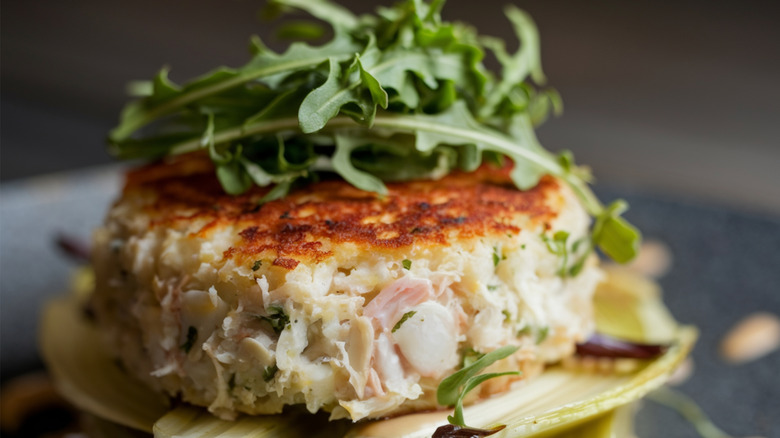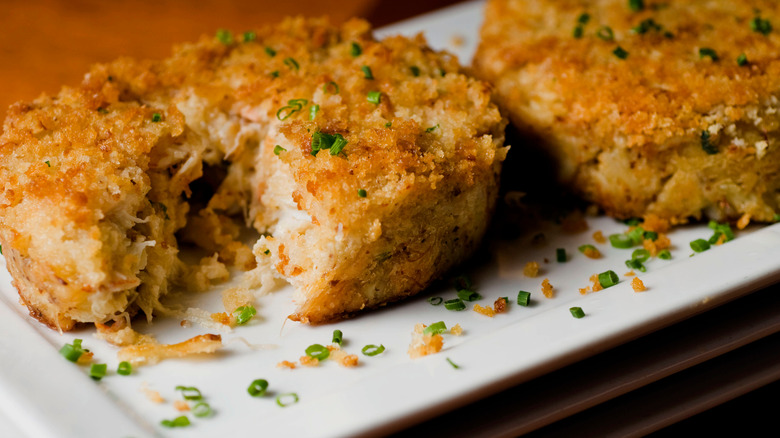How To Prevent Homemade Crab Cakes From Falling Apart
When working with something as delicate and potentially expensive as crab, there's nothing worse than when it falls apart and quickly becomes an impromptu seafood stir fry. Luckily, Chef Barry D'Arcy, private yacht chef and founder of Ocean Earth Chefs, has an easy tip that guarantees their integrity: refrigeration.
"Chilling crab cakes before cooking gives the mixture time to firm up and bind," said D'Arcy. "The cold helps the fats solidify, which keeps the cakes from falling apart when they hit the heat." Just like when you don't want your burgers to fall apart on the grill, this gives the exterior a chance to sear and firm up before the interiors cook. By the time the inside of your crab cake starts to warm, the exterior should be well on its way to developing an even firmer, golden-brown crust that essentially cups the whole dish before you flip it.
"Chill for at least one hour, or for best results, chill overnight," D'Arcy explained. "That gives the mixture enough structure to handle flipping and shaping without cracking or breaking apart." This is especially important if you like big chunks of meat rather than shreds, as they'll maintain their shape better. However, if you like smaller pieces, feel free to shred the meat, shape your patties, then chill them instead.
How to use binders and cook crab cakes properly
Chilling doesn't just benefit proteins but also binders, according to Barry D'Arcy. "It also allows the breadcrumbs or other binders to fully absorb moisture, tightening the texture without making the cakes dense." From Maryland to Carolina crab cakes, every type relies on chilling, binders, and technique to keep their shape while maintaining a tender texture.
"A light touch of mayonnaise or egg helps hold the mix together without overpowering the crab," said D'Arcy. Mayonnaise is a creamy, slept-on ingredient rich in moisture and fat, both of which solidify in the fridge. Its soft flavor is perfect when you need to guarantee the right amount of adhesion. Egg whites are packed with a great protein that essentially turns to glue at low temperatures. D'Arcy recommended using only the bare minimum you need to maintain the crab's flavor and a gentle hand when stirring to avoid breaking up the crab lumps.
A non-stick pan is your best friend for crab cakes since it makes the flipping portion much easier. Try to use medium heat when preparing them to strike the perfect balance between a crispy outside and flaky, moist interior. "Resist pressing down on them in the pan — that's what keeps the texture light and the crab flavour clean," D'Arcy finished. Letting them drain on paper towels to remove excess grease and keep the bottoms crispy is the final step to the perfect crab cake, one that lets them cool and contract to preserve their shape. You can also avoid the flipping altogether by making baked jumbo lump crab cakes.


